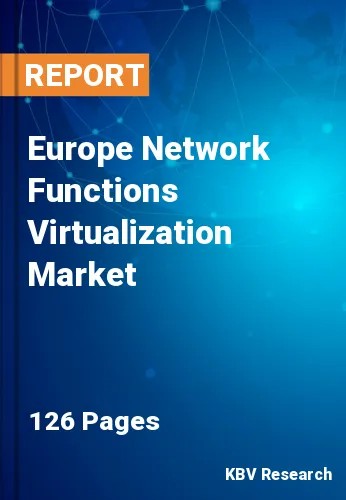The Europe Network Functions Virtualization Market would witness market growth of 24.3% CAGR during the forecast period (2022-2028).
The emergence of fierce competition for communication service offerings via agile businesses operating on the public Internet at scale, like Google Talk, Skype, and Netflix. has compelled service providers to seek out novel approaches to upend the status quo and boost income streams. In order to comply with the demands of customers, various companies are adopting network function virtualization solutions. This is one of the major factors that are driving the growth of the network functions virtualization market. Many service providers believe that the advantages of virtualizing network functions outweigh the hazards. Traditional hardware-based networks require network administrators to buy specialized hardware units, manually configure them, then join them to form a network.
This takes a lot of time and requires advanced networking knowledge. NFV makes it possible for virtual network functions to be operated on a generic standard server under the management of a hypervisor, which is significantly less expensive than buying specialized hardware. A virtualized network makes it much easier to configure and administer the network. The best part is that because the network is operated on virtual machines, which are simple to provide and administer, network capabilities may be updated or added instantly.
The regional healthcare industry is significantly employing advanced and new technologies. According to the International Trade Administration, the European Regional Development Fund (ERDF - or EFRE, in German) program and cohesion policy 2021–2027, as well as the German Lander deployment and tendering of this program, all represent the healthcare/life sciences industry as a priority for both the EU and Germany. Health-related R&D and innovation are also a focus of Horizon Europe, a European Incentive Program for Research and Innovation approved by the EU Council and Parliament that retrospectively took effect on January 1, 2021, after being finalized in April 2021. Initiatives focus on fighting cancer, aging, smart health, and digital care approaches.
The Germany market dominated the Europe Network Functions Virtualization Market by Country 2021, and would continue to be a dominant market till 2028; thereby, achieving a market value of $6,365.5 million by 2028.The UK market is anticipated to grow at a CAGR of 23.3% during (2022 - 2028). Additionally, The France market would exhibit a CAGR of 25.2% during (2022 - 2028).
Based on Component, the market is segmented into Solutions and Services. Based on End User, the market is segmented into Service Providers, Data Centers and Enterprises. Based on Enterprises Type, the market is segmented into BFSI, Manufacturing, Government & Defense, Healthcare, Retail, Education and Others. Based on Organization Size, the market is segmented into Large Enterprises and Small & Medium Enterprises. Based on Application, the market is segmented into Virtual Appliance and Core Network. Based on countries, the market is segmented into Germany, UK, France, Russia, Spain, Italy, and Rest of Europe.
Free Valuable Insights: The North America Network Functions Virtualization Market would witness market growth of 12.5% CAGR during the forecast period (2022-2028).
The market research report covers the analysis of key stake holders of the market. Key companies profiled in the report include Intel Corporation, Oracle Corporation, Huawei Technologies Co., Ltd. (Huawei Investment & Holding Co., Ltd.), Ericsson AB, Hewlett Packard Enterprise Company, Juniper Networks, Inc., NEC Corporation, Amdocs Limited, F5 Networks, Inc, and Alcatel-Lucent Enterprise (China Huaxin Post and Telecom Technologies Co., Limited).
By Component
By End User
By Organization Size
By Application
By Country
Our team of dedicated experts can provide you with attractive expansion opportunities for your business.

